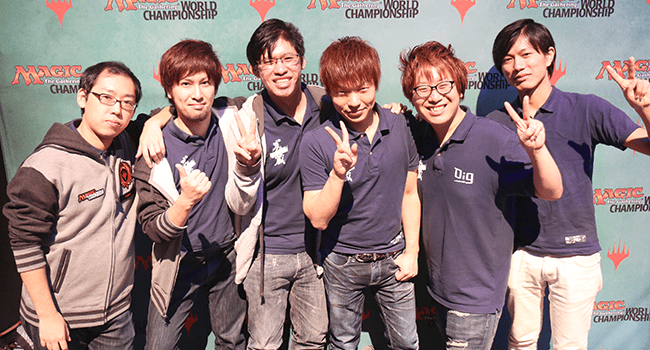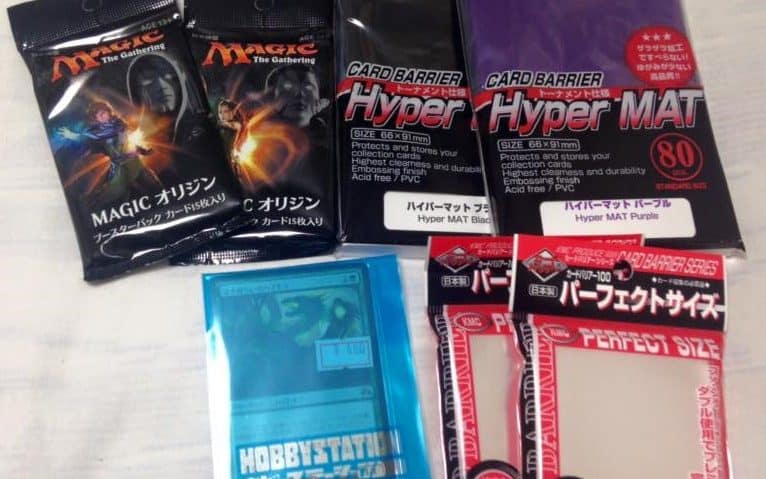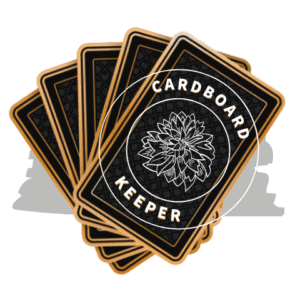When I decided to pack my bags and move to Japan, I was worried I would have to give up playing Magic The Gathering in paper and switch completely over to digital. I had concerns about the popularity of Magic The Gathering in Japan and worried if I would be able to find a local store for Friday Night Magic. Now, years after moving to Japan, I can only laugh at my previous paper MTG worries.
Magic The Gathering is popular in Japan and is the world’s second-largest market for the franchise with Japanese being the most printed card language apart from English. Many of Magic The Gathering’s professional Pro Tour players are from Japan and the Asian Grand Prix is held in Japan every year.
It wasn’t until I got to Japan that I truly began to understand the scale of how popular Magic The Gathering is especially when compared to some European countries.
As I began to explore more of the Japanese Magic scene and the impact that it has had on the game as whole, I began to understand just how deeply rooted Japan is in Magic’s culture.
How Popular Is Magic The Gathering In Japan?
The popularity of Magic The Gathering is large enough in Japan that it is MTG’s second-largest fan base.
In fact, it is so popular that the Asian Pro Tour is normally held there every single year.
In the early years of MTG and Japan, Magic found its feet quickly and rose to popularity when the Pro Tour was held in Yokohama in 1998.
The game gained so much traction with Japanese fans, that the price of Magic’s cards began to spike in Japan well before they did in the USA.
Cards such as the Dual Lands were selling for approximately x3 the amount in Japan compared to the USA – $30 in Japan whereas, in the USA, they were priced at just over $10 per card.[6]
It’s hard to imagine at this point that dual lands were ever that cheap.
However, Magic The Gathering is arguable more popular today than it has ever been in Japan, especially with the release of “Magic: The Gathering Arena”.[5]
If you live in Japan for any amount of time, you will constantly see children, businessmen, and people of all ages playing mobile games.
To this very day, it’s not uncommon for me to walk home from work and still see middle-aged men using their phones to search for encounters on Pokémon Go – I’m not joking, men in business suits, playing Pokémon Go.
Gotta love Japan.
So you can imagine with the incredible popularity of both mobile games and Magic The Gathering, that the release of Magic The Gathering Arena’s mobile app was a huge hit in Japan.
Magic The Gathering Japan went as far as to make, arguably, one of the best Magic video advertisements that we have ever seen.
If you still have not seen the Japanese advert for Magic The Gathering Arena, stop what you are doing and click below to watch the video – it’s worth the watch!
That video has over 1 million views and should give you an idea of Magic The Gathering’s popularity in Japan.
In fact, due to its popularity and the large player base with the country, Japan has consistently produced some of the game’s best Pro Tour Magic The Gathering players.
In 2016, a Pro Tour Team series was introduced. The team from Japan lead the Pro Tour Series all the way to a first-place finish.
The Tokyo based team called “Musashi” comprised of members[2]:
- Kentaro Yamamoto
- Yuuya Watanabe
- Shota Yasooka
- Ken Yukuhiro
- Yuuki Ichikawa
- Teruya Kakumae
These platinum Pros boasted at the time a combined:
- 16 Pro Tour top 8 finishes
- 3 player of the year titles
- 2 hall of fame inductions
On top of that, each of the team’s 6 members has won at least one Grand Prix with Yuuya Watanabe having a staggering 7 Grand Prix wins by himself.

How Have Japanese Players Affected Magic The Gathering?
The fan base in Japan is so large that they have actually affected how Magic The Gathering is played over the years.
From inspiring the birth of new Magic formats, to certain playing customs that have been adapted by players throughout the world.
This isn’t something new though, Japanese players have been subtly changing the way Magic players around the world interact with their decks and even how they shuffle their cards.
Take this short video that was filmed over 13 years ago of Pro Magic Player “Tomoharu Saito” shuffling his deck as an example.
At Grand Prix San Francisco 2007, the way Tomoharu Saito shuffled his deck was referred to as a “unique shuffling style“, but does it look familiar to you?
Check My 15 Card Sideboard
In Japan, while not mandatory, it’s customary to lay your sideboard cards face down on the table in between games to ensure that your opponent can see that you have exactly 15 cards in your sideboard.
I had seen players do this occasionally at FNM or while watching live tournaments being streamed online, but had no idea this sideboard habit potentially originated from Japan.
Only when I started to attend FNM in Japan did I start to see just how common this was here.
Check My Starting 7 Cards
A Magic habit that had been a part of my game routine well before I am to Japan was drawing my starting hand facedown.
At the start of the game; when you are drawing your first 7 cards, you will draw them face down onto the table.
This helps to show to your opponent that you have only drawn 7 cards and no more than that to start the game.
It also serves the purpose of helping to avoid seeing extra cards that have been picked up by mistake. If this happens at a high competition level, the penalty of seeing an extra card when you weren’t supposed to can be severe and can sometimes result in disqualification.
This Magic The Gathering custom of drawing 7 cards facedown is said to have been popularised by Japanese professional players and after attending Friday Night Magic in Japan, I believe them.
I’m not sure I have played a game of paper Magic where my Japanese opponent hasn’t drawn this way to start the game.
Oftentimes, your Japanese opponent will make you confirm that you have counted their 7 cards before they will even pick them up – so if they’re staring at you at the start of the game with their cards facedown, that would be why.
Pro Tip: If you don’t speak any Japanese, a quick “thumbs up” or “head nod” is all you need to do to get the game underway.
Japan & Magic The Gathering Formats
The Tokyo player base in Japan was passionate enough about the game to have their two biggest game stores collaborate and introduce their spin on a new Magic format called Frontier[3].
The two stores responsible for the development of Frontier are Haruya and BigMagic.
It’s secret that the most popular formats of Magic are:
- Commander
- Modern
- Standard
but often these formats will take a toll on your wallet[4].
The Frontier format was introduced as a cheaper alternative to playing Magic’s more expensive Modern format, which uses cards that can be costly to buy. The new format also provided a use for cards that had rotated out of Standard but didn’t see play anywhere else.
Frontier takes the best of both worlds from Magic’s Modern and Standard formats and leans a little more towards Modern due to the nonrotating card pool.
A Frontier deck can only include cards from the set “Magic 2015” and onwards.
You can still find the format being played in Japan, but didn’t have enough traction globally due to Wizards of the Coast not promoting and supporting the format.
That’s not to say though, Wizards of the Coast didn’t take notice of the new format.
Not long after Frontier tried to take off as a format did Magic The Gathering try to introduce a new format of its own that boar many similarities to Japan’s new format, “Pioneer”.
It’s hard to say whether Pioneer was birth from the idea of Frontier or if Wizards of the Coast had been sitting on Pioneer for some time and decided not to support Frontier because they wanted to start a similar format.
Either way, the Japanese player base may have been the push Magic The Gathering needed to give players what they had been asking for; new nonrotating formats such as “Pioneer” and “Historic”.
Are Magic The Gathering Tournaments Big in Japan?
The Asian Grand Prix is held every year in Japan due to the overwhelming support from the large player base.
Not only are pro tournaments held in Japan, but some of the largest card stores hold tournaments every single day.
Hareruya (one of the founders of the Frontier format) has tournaments scheduled every single day from 11 am until 11 pm.
These tournaments can cater to over 300 players and run all year round, so if you are ever in the mood to play some competition MTG, you just need to head down to Hareruya Tornemnet center in Tokyo.
There isn’t a specific format that you need to play to join in; they scheduled various formats for different days of the week, so anybody who loves Standard, Modern, Legacy, Commander, and more can join in the fun.

Magic The Gathering is big in Japan. The country contains Magic’s second-largest market in the world and has produced some of Magic the gathering most talented players ever. The player base is large enough that they attempted to introduce Frontier, a new format to the game.
With Pro tournaments being held there regularly and casual tournaments being held 7 days a week in Tokyo, the popularity of Magic The Gathering in Japan is massive!
The conclusion, without a doubt, is that Magic The Gathering is probably one of the most popular card games in Japan, and I don’t see that changing any time soon!
